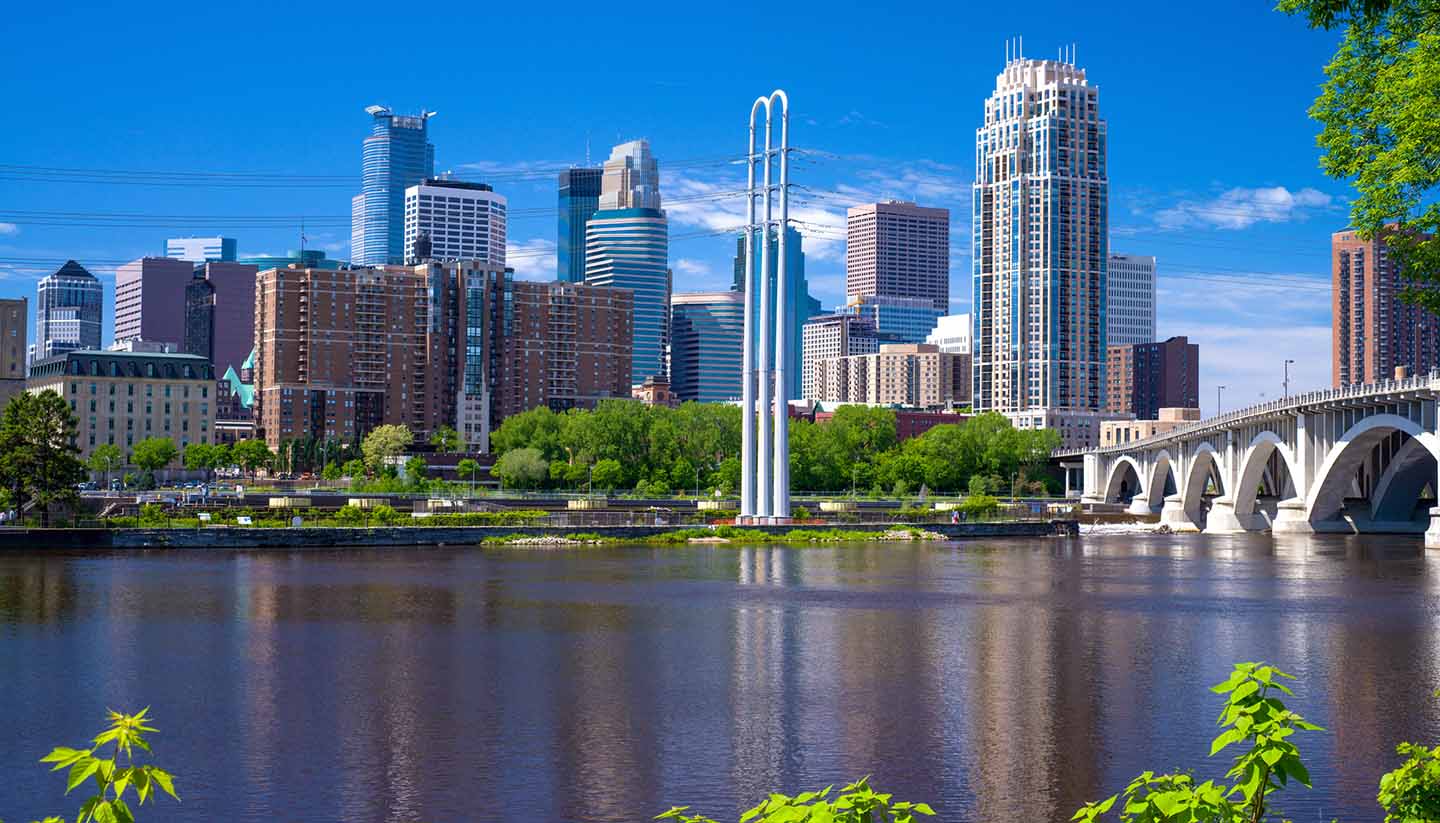Minneapolis-St Paul History
Nicknamed the ‘twin cities’, Minneapolis-St Paul began life as two separate towns that both perched beside the mighty Mississippi River. Founded by immigrants arriving from Sweden, Norway, Denmark and northern Germany, Minneapolis came first, founded on the west bank in 1855, opposite St Anthony Falls.
Making the most of what was available to them, early settlers used the Falls to generate power for sawmills and flourmills, which by 1870, made Minneapolis the flour milling capital of the world. The presence of Fort Snelling encouraged more settlers to set up home there, with both tradesmen and travellers kept safe by the garrison.
While Minneapolis was springing up on the west bank of the Mississippi, another town was beginning to take shape on the opposite embankment. Formed from the tiny villages of Pig's Eye and Lambert's Landing, the fledgling St Paul swiftly grew, thanks to its convenient harbour which opened it up to river trade. From here, the manufactured goods of Minneapolis were sent downriver, while the construction of a rail link in 1867 gave rise to further expansion.
By the beginning of the 20th century, Minneapolis-St Paul was a thriving industrial town, famous for its flour mills and food processing plants – the latter still important in the city today. Further economic opportunities arose from the Hennepin Island Hydroelectric Plant, constructed in 1906 to harness the power of the river.
But the good times were not to last and like the US’s other big industrial centres, Minneapolis-St Paul was hit hard by the Great Depression of the 1930s and again by the post-war industrial malaise that hammered manufacturing in Europe and the US.
The city bounced back in the 1980s courtesy of a building boom that populated the skyline with glittering glass and steel buildings. It followed up with another construction-driven boom, this time in condos, in the 1990s. Today, building still plays a key role in city finances, with the old riverside the latest to be reworked by city planners.
Did you know?
• Charles Strite, the inventor of the pop-up toaster, was born in Minneapolis.
• The first digital recording to be commercially released was made at Minneapolis studio, Sound 80.
• The first successful open heart surgery was conducted in Minneapolis in 1952.


